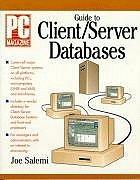Answered step by step
Verified Expert Solution
Question
1 Approved Answer
Chapter 3 1 . The IBM 3 6 0 had a scheme of locking 2 - KB blocks by assigning each one a 4 -
Chapter The IBM had a scheme of locking KB blocks by assigning each one a bit key and having the CPU compare the key on every memory reference to the bit key in thePSW. Name two drawbacks of this scheme not mentioned in the text Consider a swapping system in which memory consists of the following hole sizes in memory order: MB MB MB MB MB MB MB and MB Which hole is taken for successive segment requests of a MB b MB c MB for first fit? Now repeat the question for best fit, worst fit, and next fit What is the difference between a physical address and a virtual address? If an instruction takes uses and a page fault takes an additional n uses, give a formula for the effective instruction time if page faults occur every k instructions Suppose that a machine has bit virtual addresses and bit physical addresses. aWhat is the main advantage of a multilevel page table over a singlelevel one? b With a twolevel page table, KB pages, and byte entries, how many bits should be allocated for the toplevel page table field and how many for the next level page table field?Chapter Give five different path names for the file etcpasswdHint: Think about the dires tory entries and and data segments. Why do you think a very specific number was chosen for executable files, whereas other file types had a moreorless random magic number as the first word? Contiguous allocation of files leads to disk fragmentation, as mentioned in the text, because some space in the last disk block will be wasted in files whose length is not anintegral number of blocks. Is this internal fragmentation or external fragmentation? Make an analogy with something discussed in the previous chapter One way to use contiguous allocation of the disk and not suffer from holes is to compact the disk every time a file is removed. Since all files are contiguous, copying a file requires a seek and rotational delay to read the file, followed by the transfer at full speed.Writing the file back requires the same work. Assuming a seek time of msec, a rotational delay of msec, a transfer rate of MBsec and an average file size of KB how long does it take to read a file into main memory and then write it back to the disk at a new location? Using these numbers, how long would it take to compact half of a GB disk? Consider a TB disk that uses KB blocks and the freelist method. How many block addresses can be stored in one block?
Step by Step Solution
There are 3 Steps involved in it
Step: 1

Get Instant Access to Expert-Tailored Solutions
See step-by-step solutions with expert insights and AI powered tools for academic success
Step: 2

Step: 3

Ace Your Homework with AI
Get the answers you need in no time with our AI-driven, step-by-step assistance
Get Started


